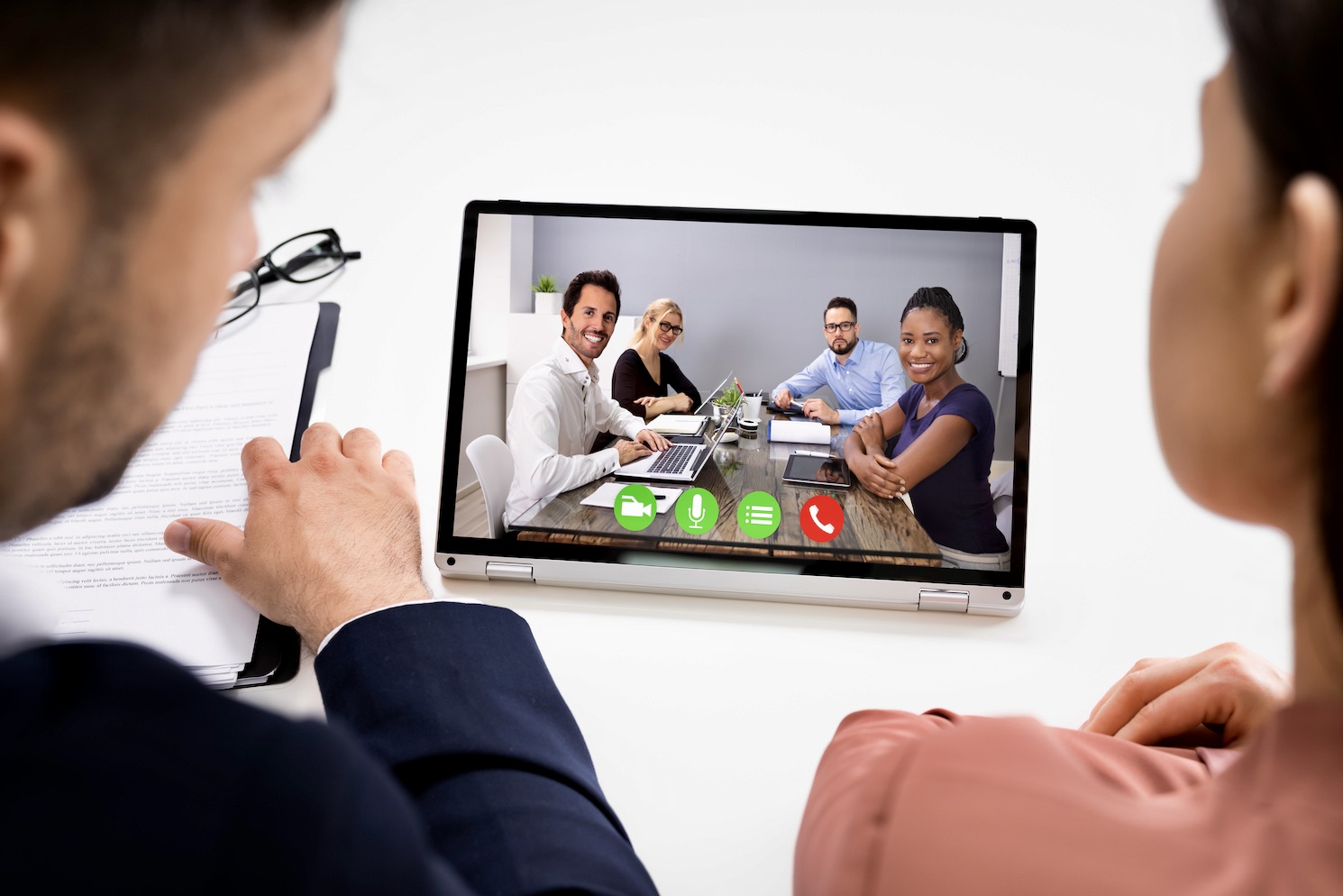
Hybrid meetings versus virtual meetings
As much as some may hope, virtual meetings aren’t going away any time soon. Hybrid work is quickly becoming the preferred way of working, and we need to adapt to the new way of communicating. With some participants in the office and others working remotely, ensuring everyone involved is engaged in the conversation can be tricky. You could continue running virtual meetings with everyone calling in from their desk, either at home or in the office. Or you might try running a hybrid meeting with only remote participants calling in. But what does that look like?
What is a hybrid meeting?
Hybrid meetings are meetings where the participants participate from different locations. Some will be in the office, generally in a conference room with audio-visual facilities, while others will be at home or in a different office.
This style of meeting is nothing new. We have already been using hybrid meetings to communicate with people outside of the business for a long time. It’s far easier and cheaper than flying out for a single session, especially for international companies.
We expect hybrid meetings to become more common as current work trends shift.
What is a virtual meeting?
Chances are if you work in an office-based role, you’re absolutely fed up with virtual meetings. You filled your meeting bingo card months ago, and the thought of hearing the words “I think your mic is muted” may fill you with dread. We hear you. But, if you’re lucky enough to have avoided virtual meetings during the pandemic, here’s a quick rundown.
Virtual meetings occur entirely online. All participants attend the meeting through a video calling platform such as Zoom or Microsoft Teams. Everyone must have a microphone and sometimes a camera if they wish to participate.
What do virtual and hybrid meetings have in common?
Both formats involve remote participants, requiring the appropriate technology to successfully run the meeting. This can cause its fair share of issues due to misbehaving technology. It can also prove challenging to ensure everyone in the meeting can engage meaningfully.
But these potential problems are outweighed by the upsides of hybrid and virtual meetings. Both meeting styles can help businesses manage the number of employees in the office at one time, something that has become crucial during the pandemic. They can also offer a higher level of accessibility, as those unable to attend in person can simply log on and participate from anywhere.
How are they different?
Virtual meetings are fully online experiences that allow attendees to participate in the meeting regardless of where they may be. Not only is this a great way to make essential meetings accessible for everyone, but it also offers a unique way to assess how the meeting went.
Normally, you would need to ask attendees to complete a survey to determine their thoughts and feelings about the meeting. With virtual meetings, you can collect detailed data regarding engagement and enjoyment to help you identify what went well and what could use some improvement.
Hybrid meetings are the middle ground between in-person and virtual meetings. You can still have the engagement and atmosphere of a physical event, while those unable to attend in person can still participate.
It’s important to remember that planning a hybrid meeting requires extra work because you need to make arrangements for virtual attendees who will have different needs than those attending in person.
Tips for running each type of meeting successfully
There is a lot to consider when running a virtual or hybrid meeting, especially if you’re used to running in-person meetings. Each type of meeting requires a slightly different approach to ensure every participant is meaningfully engaged in the process. However, some tips apply to both.
Engage everyone
A key challenge for both formats is keeping everyone engaged. It can be extremely easy to accidentally ignore the quieter participants in a virtual setting. It can be even easier to accidentally ignore virtual participants in a hybrid meeting.
As the meeting host, you need to try and include every participant, though you should avoid making anyone feel pressured. An ice-breaker game can help ease participants into the meeting and encourage them to take part.
Improve your audio-visual equipment
Your offices should be fully equipped with high-quality video and audio equipment by this stage in the pandemic. We have had two years of “I can’t hear you very well” and “Sorry, you’re breaking up a little.” We all know how important it is to upgrade your AV tech. However, if you were holding out on updates in hopes things might go back to “normal,” it’s time to accept that hybrid working and virtual meetings are here to stay.
Virtual and hybrid meetings could mean the difference between securing a vital deal and losing a client. Upgrade your facilities if you haven’t already, or you could risk getting left behind.
Test your facilities before the meeting
Technology is crucial to virtual and hybrid meetings. You need it to perform consistently throughout the session to ensure everything runs smoothly. Nothing kills momentum and productivity quite like troubleshooting the video call.
To avoid any mid-meeting hiccups, schedule virtual participants a little earlier so you can test the equipment before diving into the meeting. You can use this extra time to fix any issues and give everyone a chance to make sure things are working on their ends.
Some may groan at the idea of extending a meeting, but just a few extra minutes can help make everything seamless.
Use the right technology
The more you host virtual and hybrid meetings, the more you’ll get to know which software works for you. However, video conferencing software isn’t the only way to use technology to improve your meetings.
Smartway2 offers a simple and elegant way of scheduling meetings, reserving meeting rooms, and more! Request a demo today to see how Smartway2 can revolutionize your office in this era of hybrid working.


